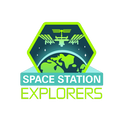ARISS News Release No. 24-41
ARISS Contact is Scheduled with Students at Narayama ARISS School Contact, Nara, Japan
July 26, 2024—Amateur Radio on the International Space Station (ARISS) has received schedule confirmation for an ARISS radio contact between an astronaut aboard the International Space Station (ISS) and students located in Nara, Japan. ARISS conducts 60-100 of these special amateur radio contacts each year between students around the globe and crew members with ham radio licenses aboard the ISS.
School Story:
Nara City has a long history, with its capital established approximately 1,300 years ago. In addition, Nara Prefecture has many world heritage sites and is an international tourist city.
This will be the first time ARISS School Contact will be held in Nara Prefecture.
We selected the contact members from Sakyo Elementary School and Tsubai Elementary School in Nara City.
This will be a direct contact via amateur radio allowing students to ask their questions of astronaut Mike Barratt, amateur radio call sign KD5MIJ. The downlink frequency for this contact is 145.800 MHz and may be heard by listeners that are within the ISS-footprint that also encompasses the relay ground station.
The amateur radio ground station for this contact is in Nara, Japan. Amateur radio operators using call sign JK3ZNB, will operate the ground station to establish and maintain the ISS connection.
The ARISS radio contact is scheduled for July 29, 2024 at 7:52:51 pm JST (Japan) (10:52:51 UTC, 6:56 am EDT, 5:56 am CDT, 4:56 am MDT, 3:56 am PDT).
The public is invited to watch the live stream at: https://www.youtube.com/watch?v=BQrUHun__6o
_______________________________
As time allows, students will ask these questions:
1. Can you see lightning on earth from space?
2. What do you eat in space?
3. Is the earth really green when seen from space?
4. What kind of training does it take to go to space?
5. How do you dispose of toilet waste?
6. Have you ever seen any space debris while working outside the ISS?
7. Can you write with a pen in space?
8. What do you look forward to every day?
9. Is there any dust inside the space station?
10.How do you drink in space?
11. How do you exercise in space?
12. When you sleep in a sleeping bag in space, do you float in the sleeping bag
or does the sleeping bag itself float?
13. What happens when you throw a paper airplane in space?
14. How did you feel when you first went into space?
15. What is the Earth like as seen from space?
ARISS Contact is Scheduled with Students at Narayama ARISS School Contact, Nara, Japan
July 26, 2024—Amateur Radio on the International Space Station (ARISS) has received schedule confirmation for an ARISS radio contact between an astronaut aboard the International Space Station (ISS) and students located in Nara, Japan. ARISS conducts 60-100 of these special amateur radio contacts each year between students around the globe and crew members with ham radio licenses aboard the ISS.
School Story:
Nara City has a long history, with its capital established approximately 1,300 years ago. In addition, Nara Prefecture has many world heritage sites and is an international tourist city.
This will be the first time ARISS School Contact will be held in Nara Prefecture.
We selected the contact members from Sakyo Elementary School and Tsubai Elementary School in Nara City.
This will be a direct contact via amateur radio allowing students to ask their questions of astronaut Mike Barratt, amateur radio call sign KD5MIJ. The downlink frequency for this contact is 145.800 MHz and may be heard by listeners that are within the ISS-footprint that also encompasses the relay ground station.
The amateur radio ground station for this contact is in Nara, Japan. Amateur radio operators using call sign JK3ZNB, will operate the ground station to establish and maintain the ISS connection.
The ARISS radio contact is scheduled for July 29, 2024 at 7:52:51 pm JST (Japan) (10:52:51 UTC, 6:56 am EDT, 5:56 am CDT, 4:56 am MDT, 3:56 am PDT).
The public is invited to watch the live stream at: https://www.youtube.com/watch?v=BQrUHun__6o
_______________________________
As time allows, students will ask these questions:
1. Can you see lightning on earth from space?
2. What do you eat in space?
3. Is the earth really green when seen from space?
4. What kind of training does it take to go to space?
5. How do you dispose of toilet waste?
6. Have you ever seen any space debris while working outside the ISS?
7. Can you write with a pen in space?
8. What do you look forward to every day?
9. Is there any dust inside the space station?
10.How do you drink in space?
11. How do you exercise in space?
12. When you sleep in a sleeping bag in space, do you float in the sleeping bag
or does the sleeping bag itself float?
13. What happens when you throw a paper airplane in space?
14. How did you feel when you first went into space?
15. What is the Earth like as seen from space?


 RSS Feed
RSS Feed







